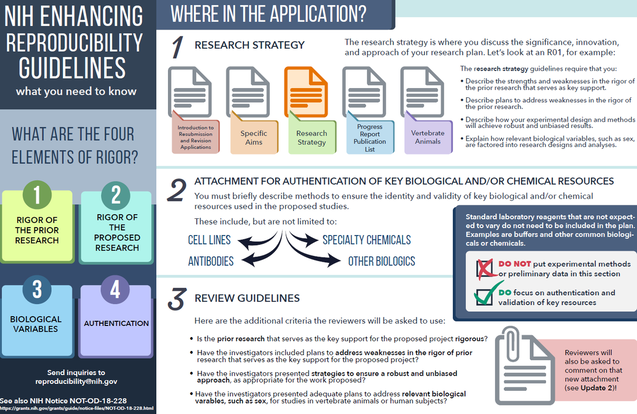Rigor & Reproducibility
Scientific rigor is the strict application of the scientific method to ensure unbiased and well-controlled experimental design, methodology, analysis, interpretation and reporting of results.
"Reproducible research practices include rigorously controlled and documented experiments using validated reagents. These practices are integral to the scientific method and they enable reliable and actionable research results." [1]
"Reproducible research practices include rigorously controlled and documented experiments using validated reagents. These practices are integral to the scientific method and they enable reliable and actionable research results." [1]


